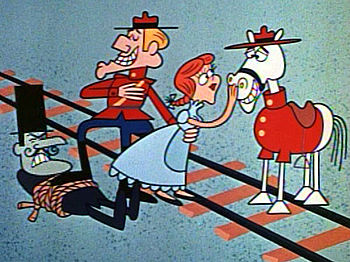In the UK changing ends en route is quite common, and is facilitated by most, possibly all, passenger consists being double-ended: MUs, power cars at each end or a locomotive at one end and a driving trailer (as we call cab cars) at the other. As British coaching stock was traditionally compartmented with seats facing each other most people don't care about direction of travel, even after most rolling stock switched to American-style open saloons in the 20th century, so UK passenger cars all have a mixture of seats facing in either direction, with some facing each other with a table in between.
But an "interesting" side-effect of the facing seats legacy from compartmented stock was that where seats faced each other at a table the seat numbers would be duplicated on each face and sub-divided as "Backwards" and "Forwards", so you could have seats "01F" and "02F" on one side of the table, with "01B" and "02B" on the other. (Non-table seats would be designated "Airline" so across the aisle you might have seats "03A" and "04A".) The seat numbers on the seats would only say "01" and "02", on both sides of the table, and would only be differentiated by printed tickets tucked into the seat backs like American seat checks, and these would frequently go missing or not even be set out in the first place...
You could imagine the confusion with inexperienced passengers not understanding the difference between "F", "B" and "A", coupled with the cars also being designated by letters, which meant that people often misread the ""F", "B" and "A" on the seat tickets as the car letter. Add to that the fun and games if a passenger boarded on a sector after the train having changed ends which meant all the "F" seats would now be facing "B" and vice versa. On a route I travelled quite frequently in the early 90s, the train would change direction twice, so many times I had to explain to people that I wasn't sitting in their seat, even if they thought they'd reserved a forward-facing seat.
A lot of newer UK stock now has electronic seat reservation systems with every seat in a car having a unique number. I've been living in the US for nearly seven years now and I haven't travelled on the older stock that doesn't have electronic reservations in well over a decade. I hope the operators that still have such stock have abandoned the "F" and "B" seats malarky, but knowing Britain, they probably haven't!
